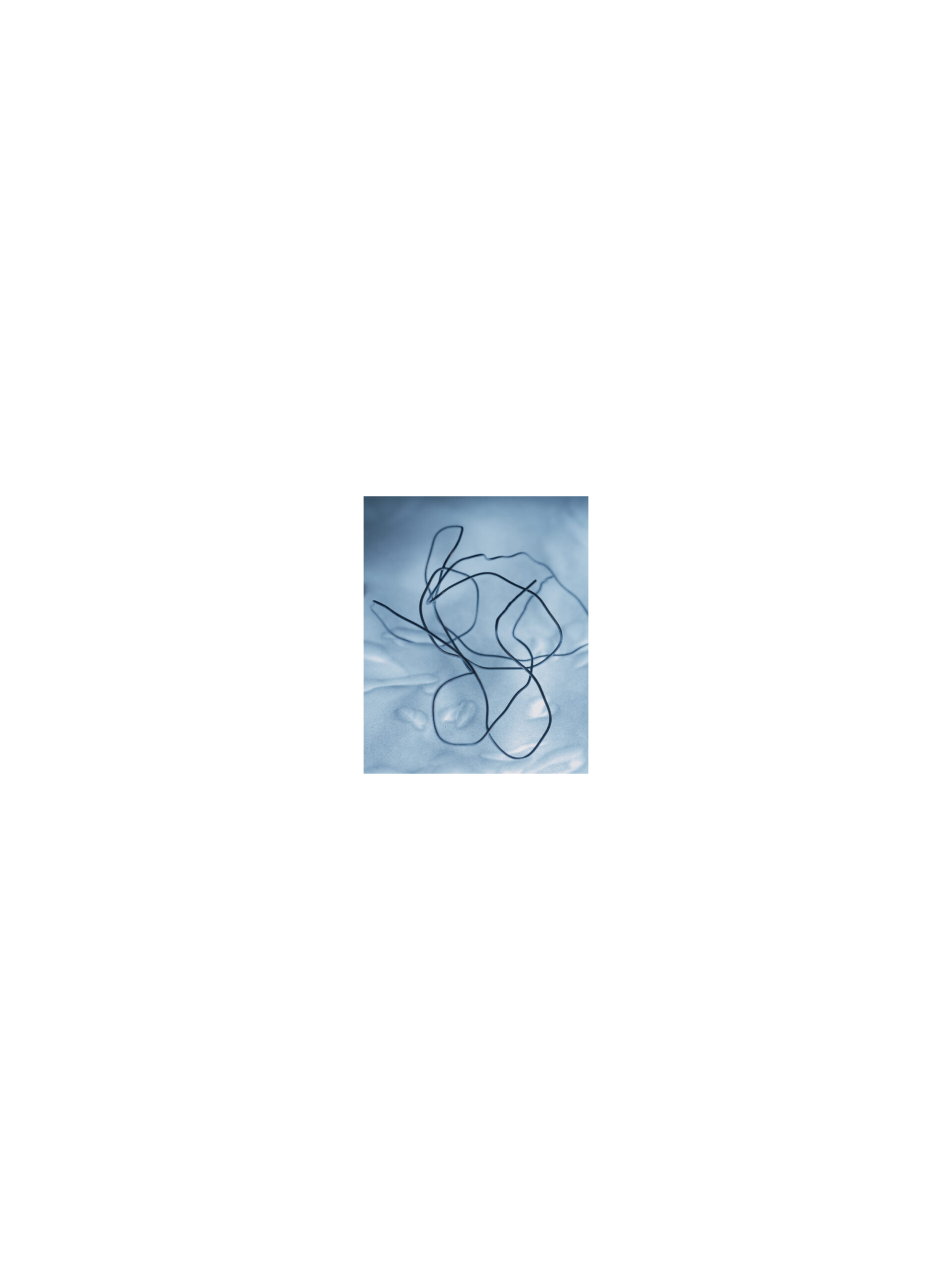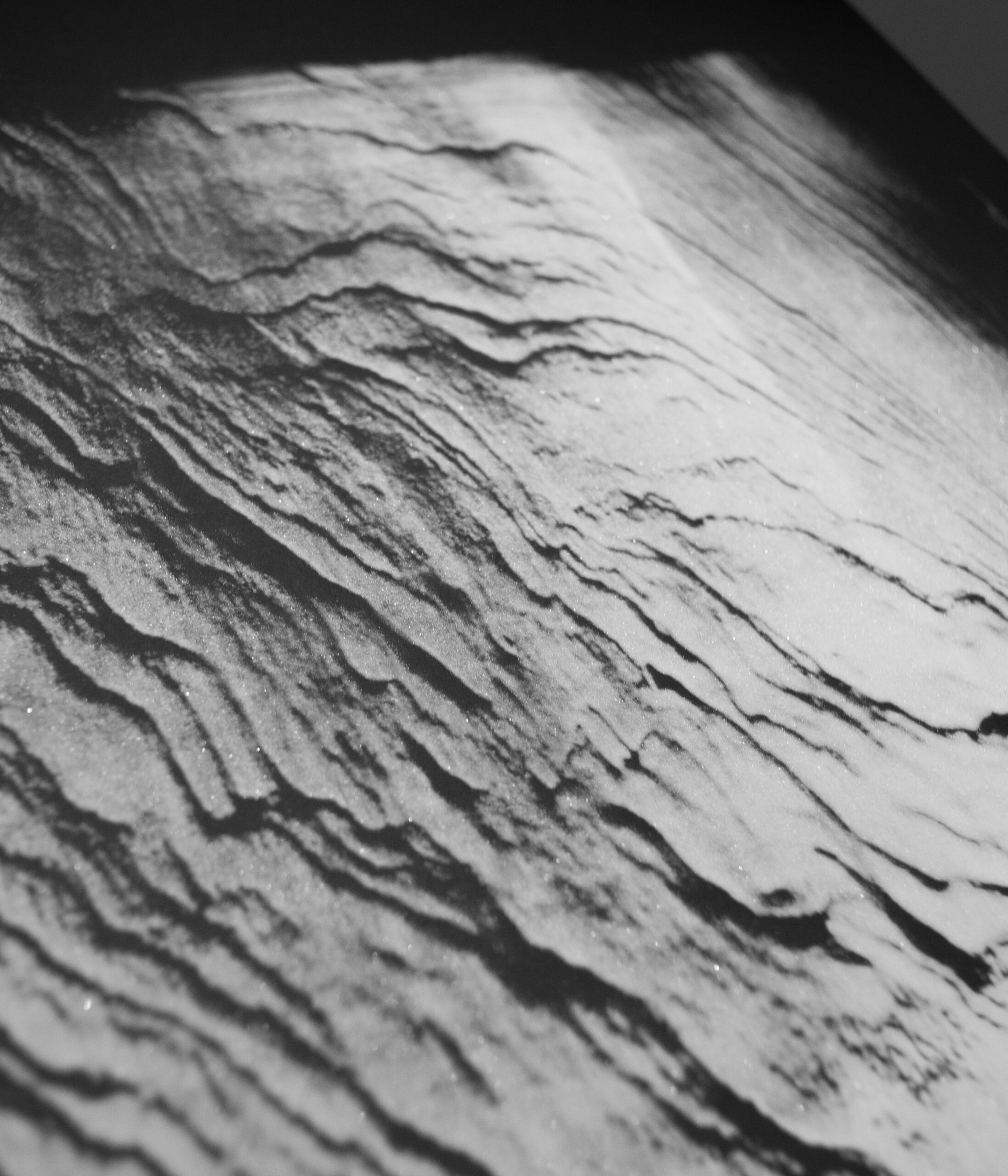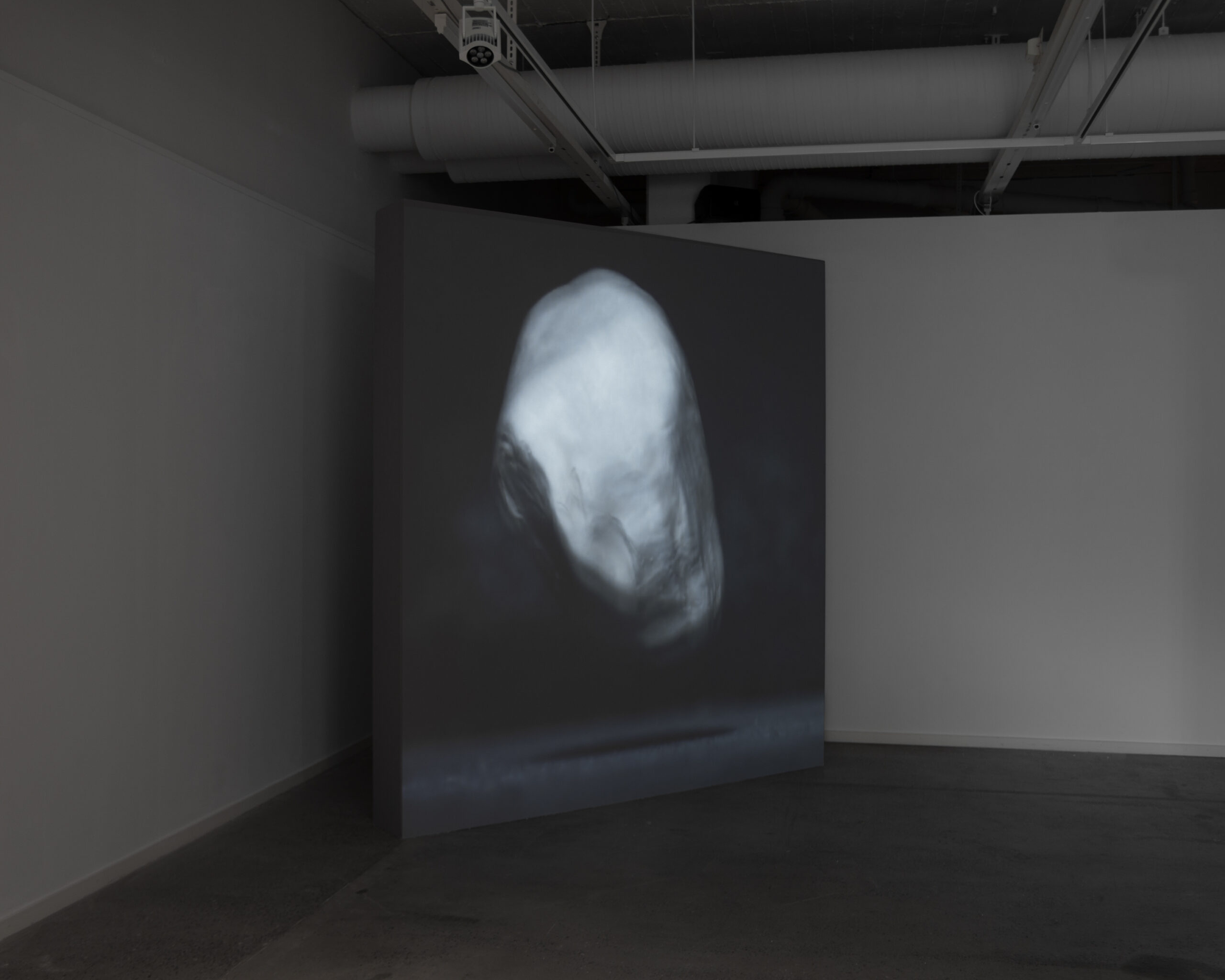


ORIGIN IS A PART OF DEPARTURE
Living on a brink, photographs are sitting somewhere between the past and the present. Yet, they are always made in a mode of anticipation — to re-live, remember the captured moment sometime in the future, or simply to be used for an instant communication. Photographs are memories, but at the same time they hold a potential to loosen up their bond with the past and look forward. What if we shift the perception of a photograph from understanding to producing; from representation to anticipation. An image has also an ability to hint towards what is (yet) to be.
Almost ten thousand years ago, when the Ice Age and a number animals of that time were dying out, a tree started to grow. Today, Old Tijkko is known as the oldest living tree system in the world. And it the main subject of Nikolai Howalt’s project — reappearing in a single image on ninety-seven different prints. Due to the numerous critical changes the climate of the Earth has faced during the millenia, we can only imagine what this tree has gone through. A rather lone being in a vast Swedish wilderness is a witness of progression — and that single image is just a glimpse into its existing. Reprinted on an almost hundred different old photographic papers, variations of an image speak about all the other paths the life of a tree could take — in the past, now and in the future. What image of an Old Tijkko will there be in the future, if any?
Unarguably, a photograph’s roots are based in the past. A moment that is finished, seized, and encapsulated is to a certain extend accessible through its visual trace — seeing the fleeting glimpse once again, being pushed back in time, yet firmly standing in the present. Exactly this fundamental access to the past that images hold is disrupting new ways of seeing a photograph. This is therefore not a negation of an image and its relation to the past, but rather an attempt to guide the perspective of a photograph towards the future. Roland Barthes wrote about the picture of man who is waiting to be executed — with the punctum not in the visible, but the realization that he is going to die and is dead at the same time.1 This viewpoint on the image makes it still positioned firmly in the history, with its consequences not reaching the present. Tangled around a specific point in past time, Barthes’s idea does not reach the present, nor the future. For that, one has to listen to the images in a different way.
The vibration can be felt the most when one resonates with it. It similar with images and their subtle noises they are making. Listening closely, to all their screams, whispers and silences, a vast landscape of thoughts opens up. Not only about the past, but also the present and the future. A photograph makes things visible, hearable, begins with something new — and what is a meaning of novelty without its future.
Making an image is a way of materializing relations, shaping them into a visual artefact of many meanings. An image of the oldest tree in the world is not just a recording from history, it is an evidence, a thought, a point of departure. And even if past was essential for its creation, you and image share the same now. This now is a gateway not only to the “what has been”, but also towards the “what is (yet) to be” — a bridge in the stream of time.

Sand Piece (2021 — 2023) is an ephemeral photograph. It is a fragile image prone to change. A fluid object with a beginning and an end. A specific object without a specific form. Due to its embedded tilting mechanism, the screen printed image will eventually pour down completely, and disappear. That specific moment, when gravity starts to break the photograph into dust — the turning point in the life of the image — happens unpredictably. The fluid structure of image points towards changeable realm that should not be fixed, but rather followed. Being aware of the eventual shift in the substance of the image, the anticipation of an upcoming difference makes an image look towards a (distant) future.
Tina M. Campt said that to access the future, one must find it in the tangible present.2 And this is exactly what an image can be, a tangible object of one’s here and now, whispering what all could be next.
To hear what an images foresees, a different approach has to be taken. If a relation between the image’s past and the present is rather linear, as a succession of events led up to now, this logic of thought stops there. When it comes to the future, one must break free of a linear perception. A photograph is therefore not so much about revealing what will happen, but rather serves as a trigger for a vision ahead — towards the anticipation of the possible. It can learn us about all the plausible trajectories of the future. In other words, it presents us the other options — what else there might be — counterintuitive, but any less possible.

The unscripted scenario of my Stone Performance (2022) video work resulted in 46 minutes and 12 seconds of repetitive out-of-balance motion of a chalk stone. A vibrating surface caused that movement, but the duration of whole performance is determined completely by chance. Once the setup was built and vibrations initiated, I backed off and let it function on its own. It has continued until the stone jumped out of the frame — an anticipated, but unpredicted end. The unnatural rhythm and non-narrative give no hints on what is happening, nor how is it ending. To wait; to search; to anticipate; to speculate — meditative motion holds a certain tension between what was, what is, and what will be.Facing only the current frame, even me, the artist, can not predict the trajectory the stone is about to take — the now of the performance is created live and by chance. With next, if any, following shortly after.
Photography has therefore an ability to not only reproduce reality, but to actually (co-)produce all the possible realities of the future. As Erika Larsson said, “Photography is an act that produces more than it understands.”3 Numerous possible trajectories of the next have an ambiguous nature, yet an attentive listener may drift with the tide and enter a new space, created by the image — the possible unknown. In that sense, the artist takes the role of an envisioner, the one who sets a stage, creating the conditions for the possibilities that an image manifests.
The new space an image creates goes beyond reason and descriptions, its main quality is that it sets into motion. Imagery gains a performative and activistic dimension, guiding us towards the awareness of the possible and the necessary. Returning to the thoughts of Tina M. Campt, images have the power to evoke imagination and anticipation beyond the past or current fact, and help us envision what is not, but must be.4 The future is to be seen now, in the present.
References
- Barthes, Roland. Camera Lucida: Reflections on Photography. London: Vintage Books, 2000.
- Campt, Tina. Listening to Images. Durham: Duke University Press, 2017.
- Larsson, Erika. Photographic Engagements: Belonging and Affective Encounters in Contemporary Photography. Göteborg: Makadam, 2018.
- Campt, Tina. Listening to Images. Durham: Duke University Press, 2017.